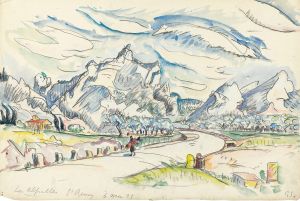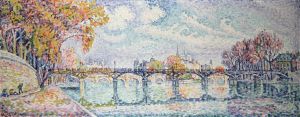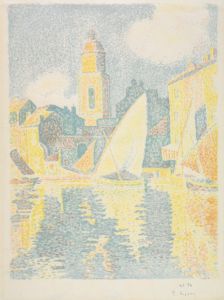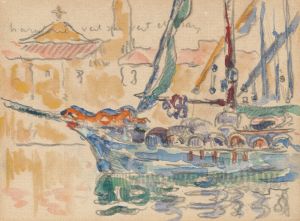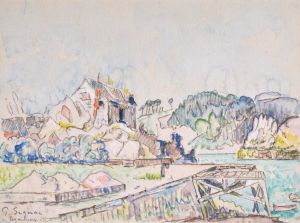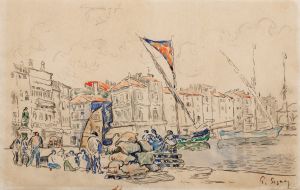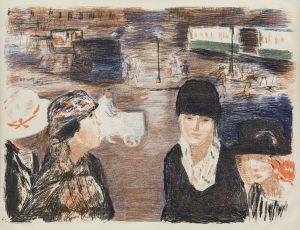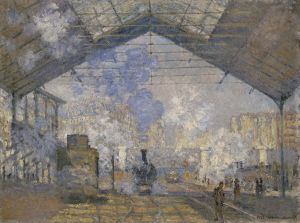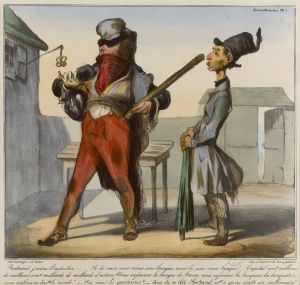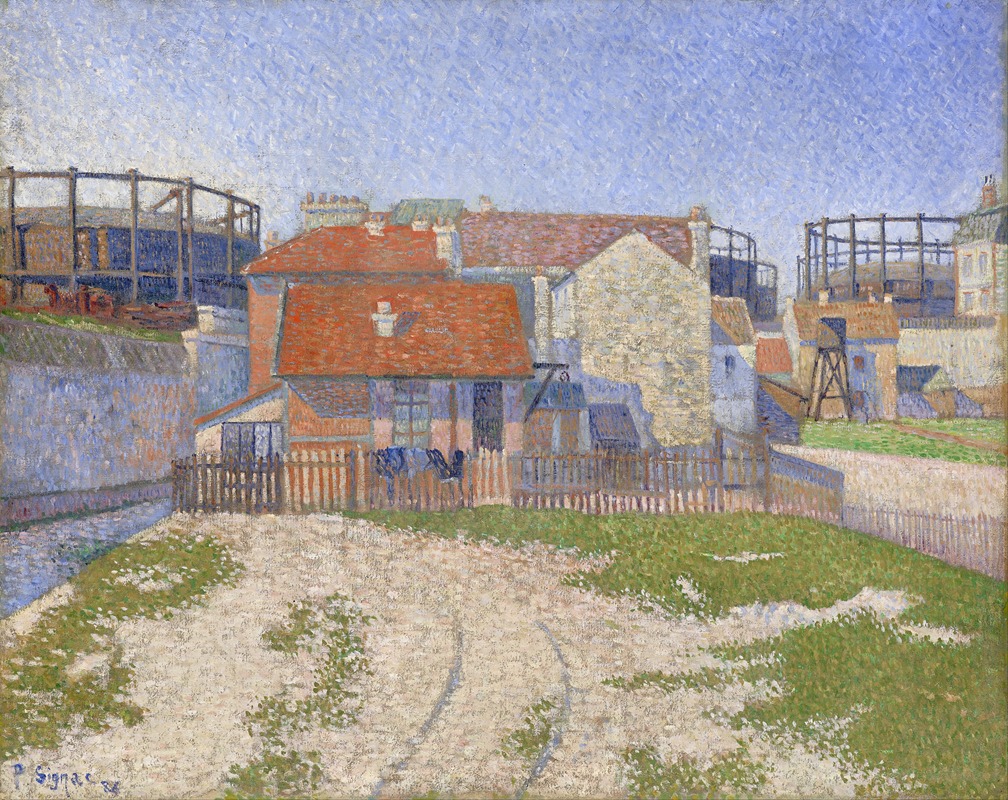
Gasometers at Clichy
A hand-painted replica of Paul Signac’s masterpiece Gasometers at Clichy, meticulously crafted by professional artists to capture the true essence of the original. Each piece is created with museum-quality canvas and rare mineral pigments, carefully painted by experienced artists with delicate brushstrokes and rich, layered colors to perfectly recreate the texture of the original artwork. Unlike machine-printed reproductions, this hand-painted version brings the painting to life, infused with the artist’s emotions and skill in every stroke. Whether for personal collection or home decoration, it instantly elevates the artistic atmosphere of any space.
"Gasometers at Clichy" is a painting created by the French Neo-Impressionist artist Paul Signac in 1886. Signac, a prominent figure in the Neo-Impressionist movement, was known for his use of the pointillist technique, a method of painting in which small, distinct dots of color are applied in patterns to form an image. This technique was developed alongside Georges Seurat, another key figure in the movement.
The painting depicts an industrial scene in Clichy, a suburb of Paris, featuring gasometers—large structures used for storing gas. The subject matter reflects the growing industrialization of the late 19th century, a theme that was increasingly explored by artists of the time. Signac's choice to portray an industrial landscape demonstrates his interest in modern life and its intersection with nature, a recurring theme in his work.
In "Gasometers at Clichy," Signac employs his characteristic pointillist style, using small, precise brushstrokes to create a vibrant and luminous composition. The painting captures the interplay of light and color, with a focus on the atmospheric effects of the industrial environment. The gasometers, along with surrounding buildings and chimneys, are rendered in a harmonious palette of blues, greens, and yellows, evoking a sense of balance between the natural and man-made elements of the scene.
This work is significant within the context of Neo-Impressionism, as it exemplifies the movement's emphasis on scientific approaches to color and composition. Signac and his contemporaries were influenced by the theories of color and optics developed by scientists such as Michel Eugène Chevreul and Ogden Rood. These theories informed their use of complementary colors and the division of tones, which aimed to achieve greater vibrancy and luminosity in their paintings.
"Gasometers at Clichy" is housed in the Musée d'Orsay in Paris, a museum renowned for its collection of 19th-century art, including works by the Impressionists and Post-Impressionists. The painting is considered an important example of Signac's early work and a testament to his role in advancing the Neo-Impressionist movement.
Paul Signac's artistic legacy lies in his innovative approach to color and technique, as well as his ability to capture the changing landscapes of his time. "Gasometers at Clichy" remains a notable example of his contribution to modern art and his exploration of the relationship between industry and nature.






